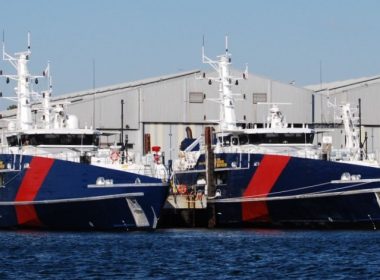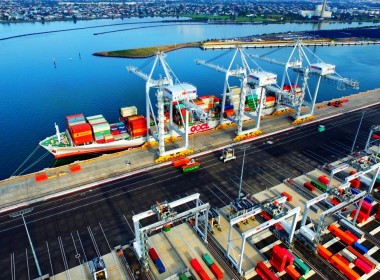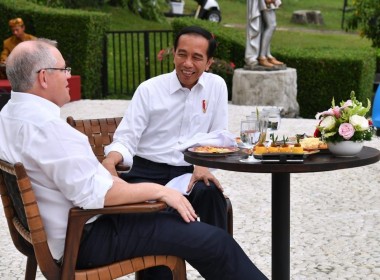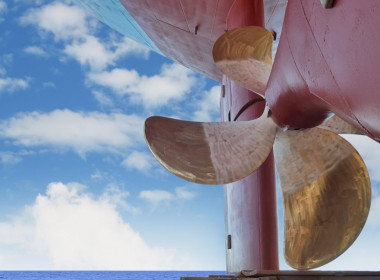OPINION | “Same, same but different”: assessing ASEAN’s and the EU’s maritime strategies

The emergence of the Indo-Pacific concept shows the cardinal role oceans play in shaping international politics.
While synergies are created by the notional confluence of the Indian and the Pacific Oceans, these waters contain some of the world’s most sensitive flashpoints for conflicts that could have monumental consequences.
In that context, the South China Sea assumes great significance. It is a crucial maritime commons with vast tapped and untapped natural resources. But it is also a major arena of traditional and non-traditional strategic contest and a source of anxiety for small and mid-sized littoral states as well as rising, major, and superpowers.
As two leading groupings with considerable stakes in the Indo-Pacific, the EU and ASEAN are striving to map the region’s complex mix of challenges and opportunities and find manoeuvring space in mitigating the threats that might emerge. Both organisations recently released maritime strategies—an updated EU maritime security strategy (EUMSS) was announced in March, and the inaugural ASEAN maritime outlook (AMO) was launched in August.
The debutant AMO emphasises the value ASEAN places on overcoming maritime problems and difficulties more sincerely than before. Due to the diversity of its member states’ interests, ASEAN has consistently fallen short of acquiring the requisite maritime awareness.
“The EU wants to strengthen its defences against hybrid and cyber assaults on its Indo-Pacific assets, including pipelines and underwater cables, whose strategic significance has been highlighted by the Ukraine war.”
The AMO reflects on ASEAN’s achievements, summarises its cooperation with partners, identifies opportunities and challenges, and indicates a way forward for its approach to maritime security. The AMO is a roadmap designed to provide a secure direction, rather than a set of instructions with specific policy steps. For a regional organisation with overlapping institutional mechanisms, poor technological know-how and members with divergent interests, producing a step-by-step plan for expanding maritime domain awareness across the spectrum would be an overwhelming task. Instead, the AMO aims to give ASEAN policymakers and dialogue partners a sense of direction by summarising partnerships and pinpointing possibilities for and constraints on further work.
Specifically, the AMO lists areas where ASEAN is seeking to improve cooperation in upholding standards that are consistent with its shared principles and international law, including the United Nations Convention on the Law of the Sea. Addressing the region’s central maritime concern—the South China Sea conflicts—the AMO candidly states ASEAN’s preference against external interference. This is a topic that ASEAN has been vague on in the past, so the AMO can be seen as a step towards recognising what it has done and should do about the issue.
The AMO also deals with longstanding structural issues and suggests fixes. It addresses the division of labour among sectoral groups and the distinct objectives of each discussion partner and aims to reduce duplication within ASEAN frameworks by breaking down silos. The AMO complements the 2019 ASEAN outlook on the Indo-Pacific, which lacked clarity on priorities and follow-up in these areas. It fills the gaps and offers a clearer direction for ASEAN’s maritime efforts in the Indo-Pacific region.
In contrast to the AMO—a start-from-scratch endeavour—the EUMSS is a renewal of a strategy first released in 2014 that was last updated in 2021. The most recent revision, updated in the context of the ongoing war in Ukraine, has an increased emphasis on naval cooperation, the development of marine infrastructure, and sturdier EU participation in the Indo-Pacific.
The EUMSS envisions frequent joint naval exercises and, eventually, more collective surveillance and information exchange. The EU wants to strengthen its defences against hybrid and cyber assaults on its Indo-Pacific assets, including pipelines and underwater cables, whose strategic significance has been highlighted by the Ukraine war. The most noticeable change, though, is the document’s heightened focus on the Indo-Pacific. It sets out a broad plan that reflects the EU’s desire to build new multilateral investment agreements in this geopolitically contentious region and urges member states to increase their engagement.
The EU’s strategy also shifts the focus from non-state threats to state threats, and from handling internal maritime security challenges inside the EU to securitising the EU in a broader global context. The update suggests a wider ambition to position the EU as a global security provider by engaging in a more contentious and sensitive maritime security arena.
“The EUMSS is outward-looking, as evidenced by its pledge to protect EU citizens at sea, whereas the AMO sweeps the snow only from its own doorstep.”
Although their expressions differ, these two policies have similar implications. They both support UNCLOS and the rules-based international order in general, and while there are few indications of material collaboration, both approaches clearly focus on the South China Sea.
The updated EUMSS contends that illegal behaviour in the South China Sea stems from unilateral actions and maritime assertiveness by certain non-EU nations and highlights the harm this does to the international order. Without question, the EU is supporting universal standards; however, that doesn’t mean ASEAN would get immediately on board with formal external cooperation. The AMO defines the South China Sea issue as an internal regional affair by acknowledging the significant contribution of the declaration on the conduct of parties in the South China Sea to stability, noting that it prevents the interference of extra-regional powers such as the US.
Through the AMO, ASEAN is seeking to increase its members’ maritime capabilities through technical and financial support. Coincidentally, the EU is keen to bolster cooperation with external entities, offering aid to improve hybrid and cybersecurity capabilities and fostering information and experience sharing. There’s potential for EU–ASEAN cooperation on this capacity-building work.
The EUMSS’s approach is specific, ambitious, and traditional, while the AMO inherits the neutrality that can be seen in the ASEAN outlook on the Indo-Pacific and still chooses to explore non-traditional maritime security issues. The EUMSS is outward-looking, as evidenced by its pledge to protect EU citizens at sea, when necessary, in its neighbourhood and other regions, whereas the AMO sweeps the snow only from its own doorstep. As a strategic vision for maritime issue settlement, community building, engagement with external partners and coordination among internal mechanisms, the AMO remains primarily focused on ASEAN’s own territory.
Apart from their differences in focus and direction, the strategies also reveal the differing styles of the organisations that produced them. The EU chooses a more muscular approach. It is inclined to take prompt, effective, and cooperative action to address maritime threats. Its aims are to strengthen its relationships with littoral states such as Indonesia, Singapore, and the Philippines and reclaim the position of power it had in the world before the successive rise of the US and China.
In comparison, the ASEAN way is more relaxed and flexible—as shown by how difficult it is to find even one specific maritime security recommendation in its AMO. The AMO reflects a “mindful” ASEAN that’s aware of the salience of maritime issues but wary of being drawn into power games between the major players. Still, it is ultimately driven by a genuine quest for a better sense of direction in the maritime domain.
Assuming these differences came be overcome, whether the intention to cooperate will translate into any meaningful action remains to be seen.
Co-written with Li Yan, project assistant at the Centre for ASEAN Regionalism Universiti Malaya.








